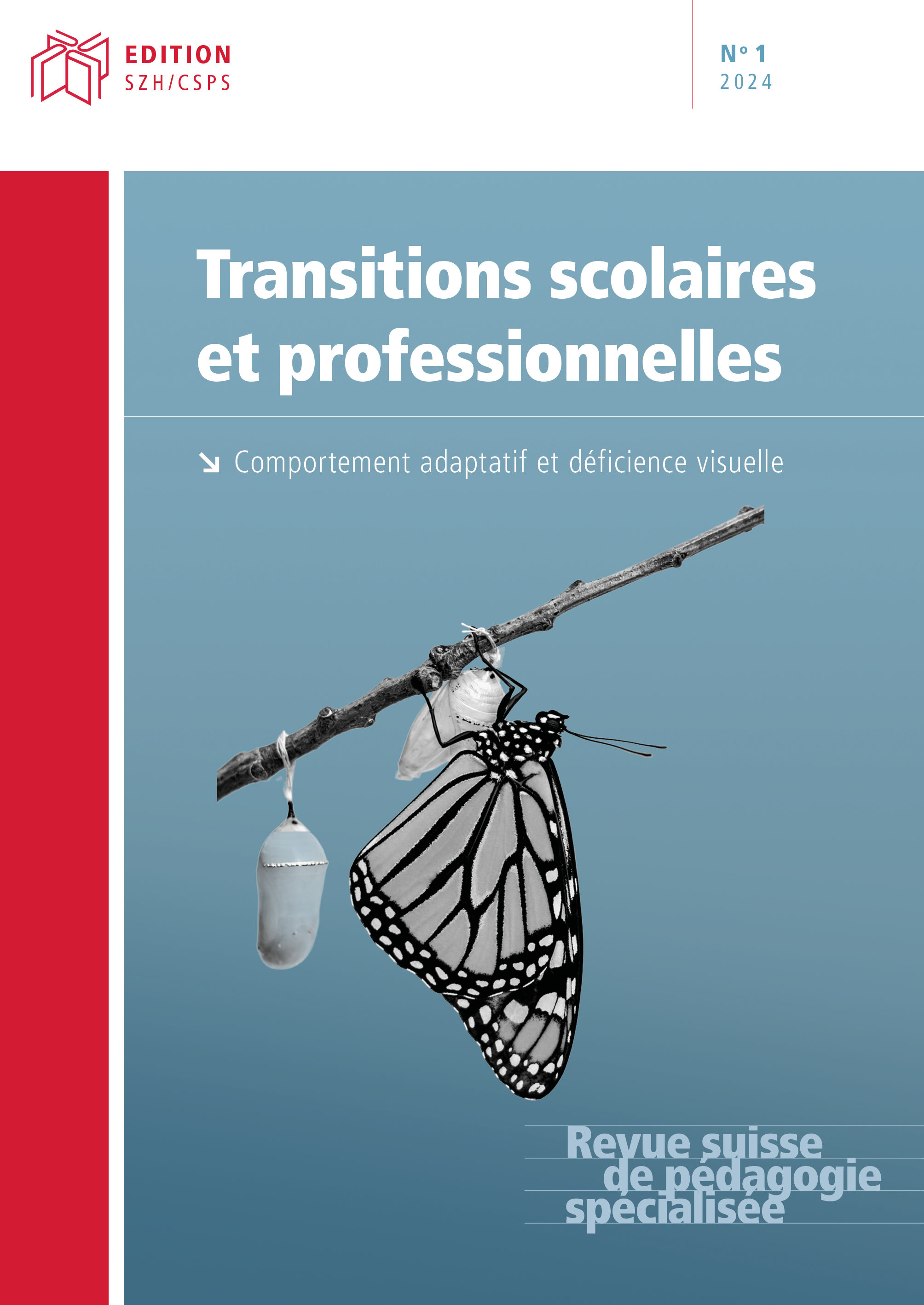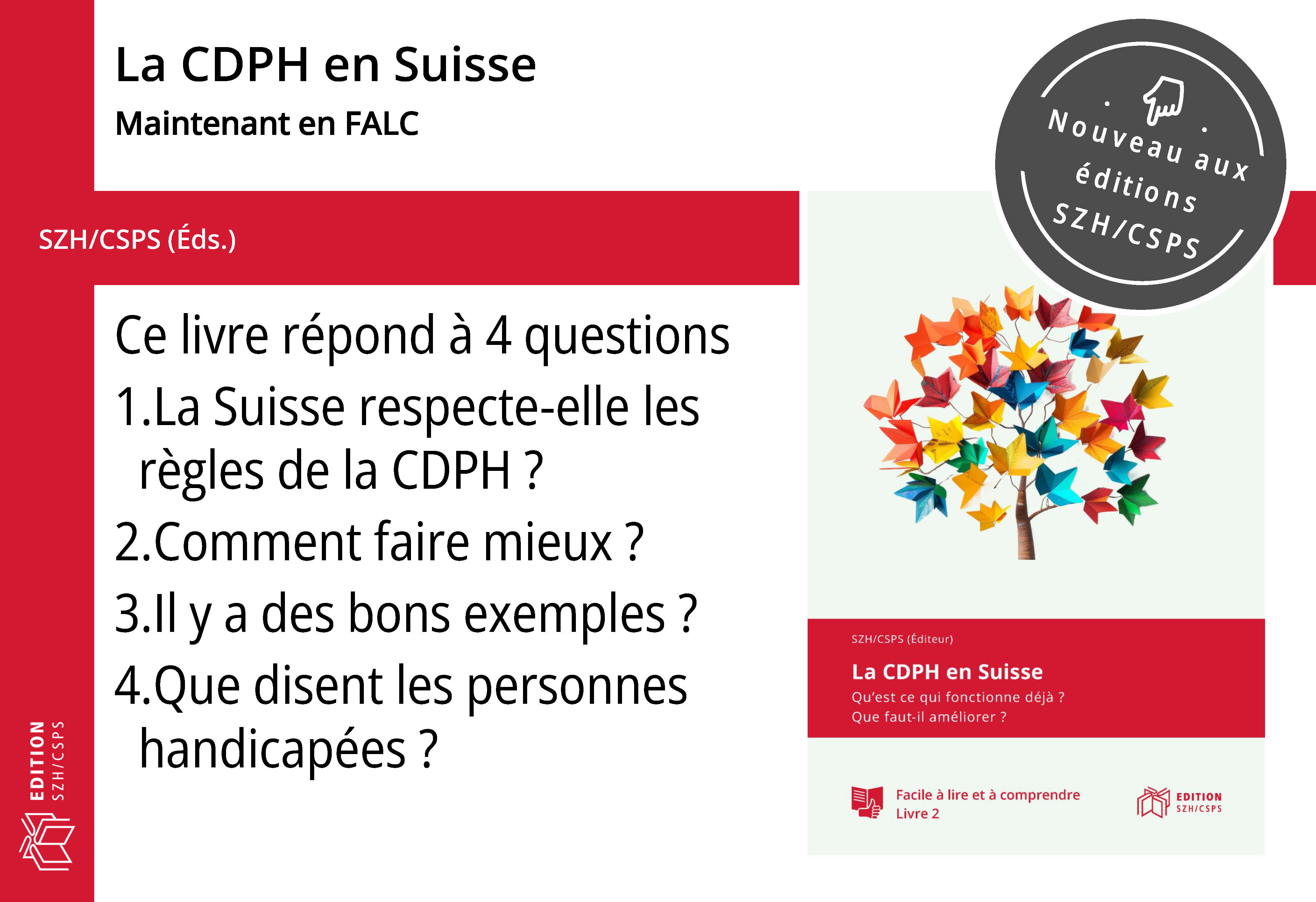Soutien à l’emploi pour les personnes ayant un TSA
Défis, enjeux et bonnes pratiques
DOI:
https://doi.org/10.57161/r2024-01-06Schlagworte:
Arbeitsmarkt, Autismus-Spektrum-Störung, berufliche Integration, Zugang zu einer BeschäftigungAbstract
Dieser Artikel betont die Bedeutung der beruflichen Integration von Menschen mit einer Autismus-Spektrum-Störung (ASS). Es werden Hindernisse wie Vorurteile, kommunikative Herausforderungen und sensorische Sensibilitäten thematisiert. Inklusive Praktiken und persönliche Betreuung werden als Schlüssel zum Erfolg hervorgehoben. Parallel dazu setzt sich die Vereinigung Actifs entschieden für die berufliche Eingliederung von Menschen mit Behinderungen ein, insbesondere von Menschen mit ASS. Sie bietet massgeschneiderte Lösungen an, die von spezifischen Schulungen über individuelles Coaching bis hin zum Aufbau strategischer Partnerschaften mit den lokalen Sektoren reichen. Die Wirksamkeit dieses Ansatzes wird veranschaulicht anhand eines Beispiels: Ein Mann mit einer Leidenschaft für Computer hat soziale und berufliche Hindernisse überwunden und ist in der Arbeitswelt erfolgreich.
Literaturhinweise
Austin, R. D., & Pisano, G. P. (2017). Neurodiversity as a Competitive Advantage. Harvard Business Review, 95(3), 96-103. https://hbr.org/2017/05/neurodiversity-as-a-competitive-advantage
Autisme-Europe. (2014). Autisme et travail : ensemble, c’est possible. Rapport sur les bonnes pratiques pour l’emploi des personnes avec autisme en Europe. https://www.inshea.fr/fr/content/rapport-autisme-et-travail
Centers for Disease Control and Prevention [CDC]. (2022). Signs and Symptoms of Autism Spectrum Disorder. CDC. https://www.cdc.gov/ncbddd/autism/signs.html
Convention relative aux droits des personnes handicapées (CDPH), RO 2014 1119 (2014). https://www.fedlex.admin.ch/eli/cc/2014/245/fr
Dietz, P. M., Rose, C. E., McArthur, D., & Maenner, M. (2020). National and State Estimates of Adults with Autism Spectrum Disorder. Journal of autism and developmental disorders, 50(12), 4258–4266. https://doi.org/10.1007/s10803-020-04494-4
Hillier, A., Fish, T., Cloppert, P., & Beversdorf, DQ (2007). Outcomes of a Social and Vocational Skills Support Group for Adolescents and Young Adults on the Autism Spectrum. Focus on Autism and Other Developmen-tal Disabilities, 22(2), 107-115. https://doi.org/10.1177/108835760702200202
Hurlbutt, K., & Chalmers, L. (2004). Employment and adults with Asperger syndrome. Focus on Autism and Other Developmental Disabilities, 19(4), 215-222. https://doi.org/10.1177/10883576040190040301
Zbinden Sapin, V. (2019). L’emploi pour les personnes sur le spectre de l’autisme : un défi à relever ? Revue suisse de pédagogie spécialisée, 3(9), 7-13. https://ojs.szh.ch/revue/article/view/72/64
Lorenz, T., Frischling, C., Cuadros, R., & Heinitz, K. (2016). Autism and Overcoming Job Barriers: Comparing Job-Related Barriers and Possible Solutions in and outside of Autism-Specific Employment. PLoS ONE, 11(1), e0147040. https://doi.org/10.1371/journal.pone.0147040
Osburn, J. (2006). An overview of Social Role Valorization theory. The SRV Journal, 1(1), 4-13. https://www.srvip.org/overview_SRV_Osburn.pdf
Scott, M., Falkmer, M., Girdler, S., & Falkmer, T. (2015). Viewpoints on Factors for Successful Employment for Adults with Autism Spectrum Disorder. PLoS ONE, 10(11), e0143674. https://doi.org/10.1371/journal.pone.0143674
Veröffentlicht
Zitationsvorschlag
Ausgabe
Rubrik
Lizenz
Copyright (c) 2024 Lucio Ferlazzo

Dieses Werk steht unter der Lizenz Creative Commons Namensnennung 4.0 International.




